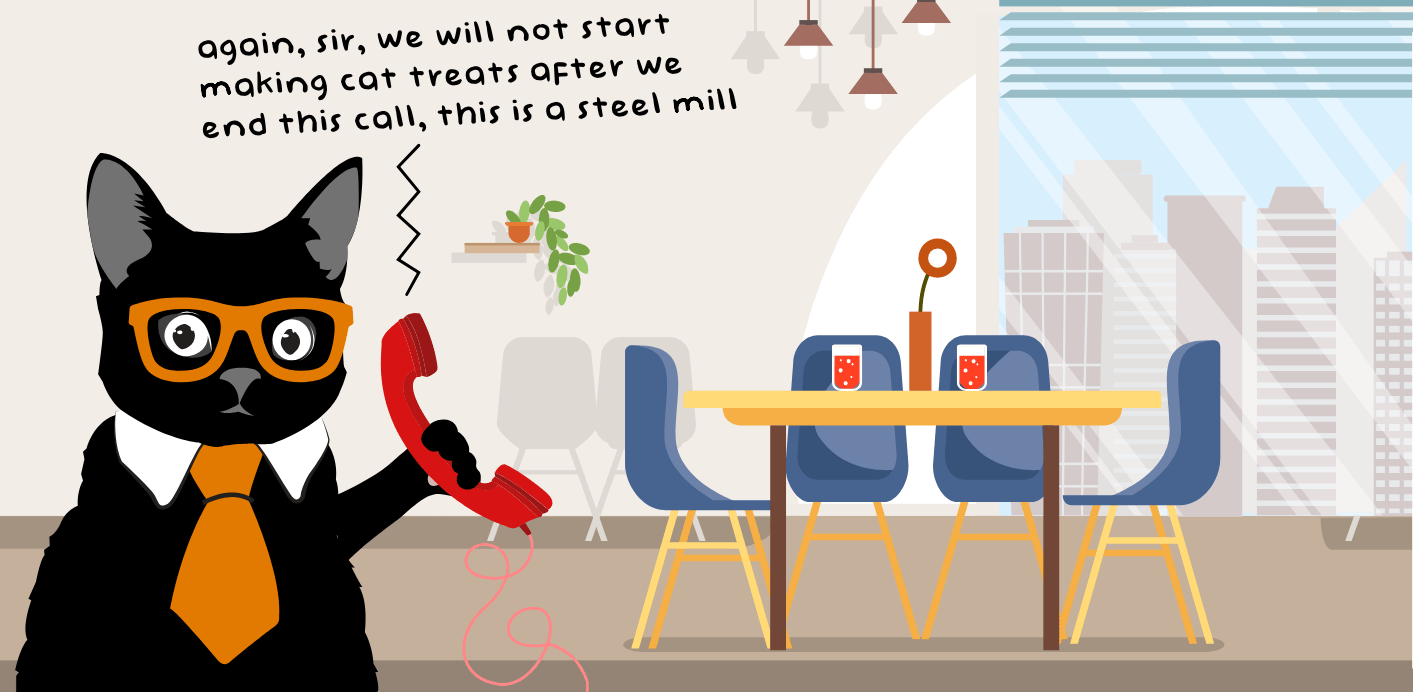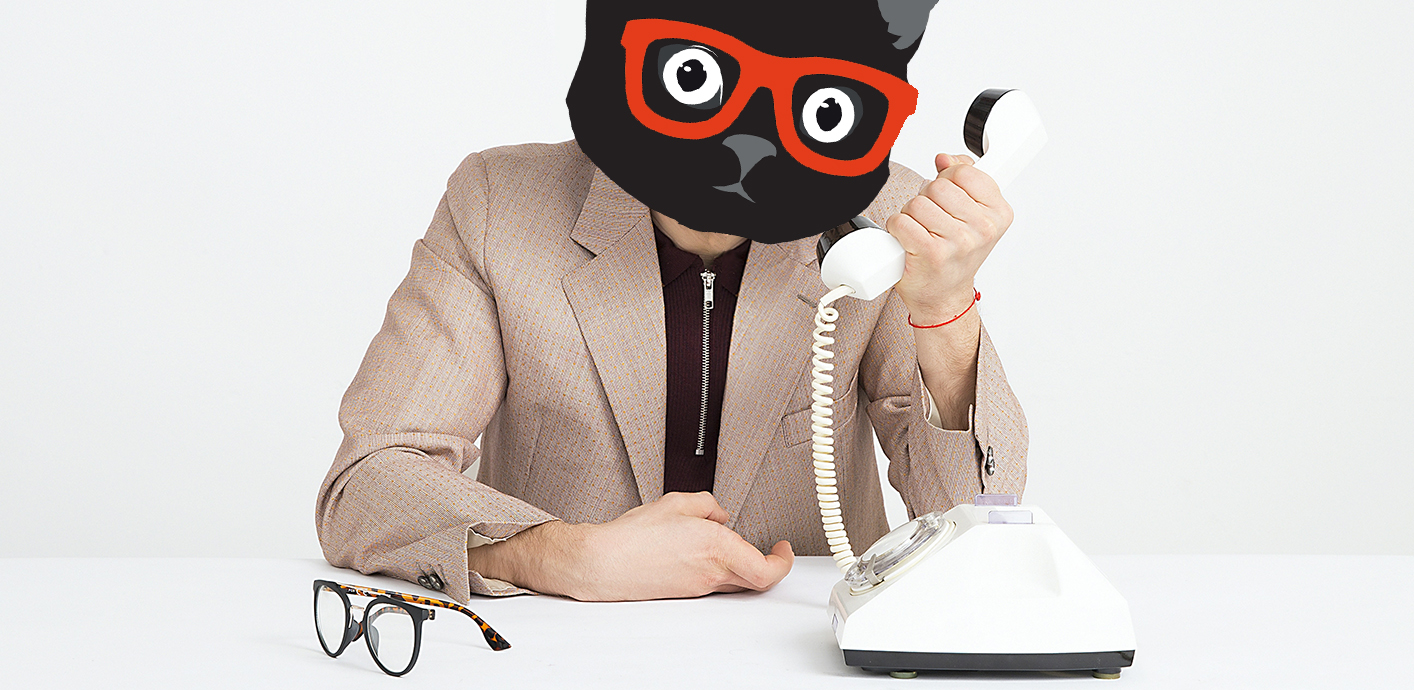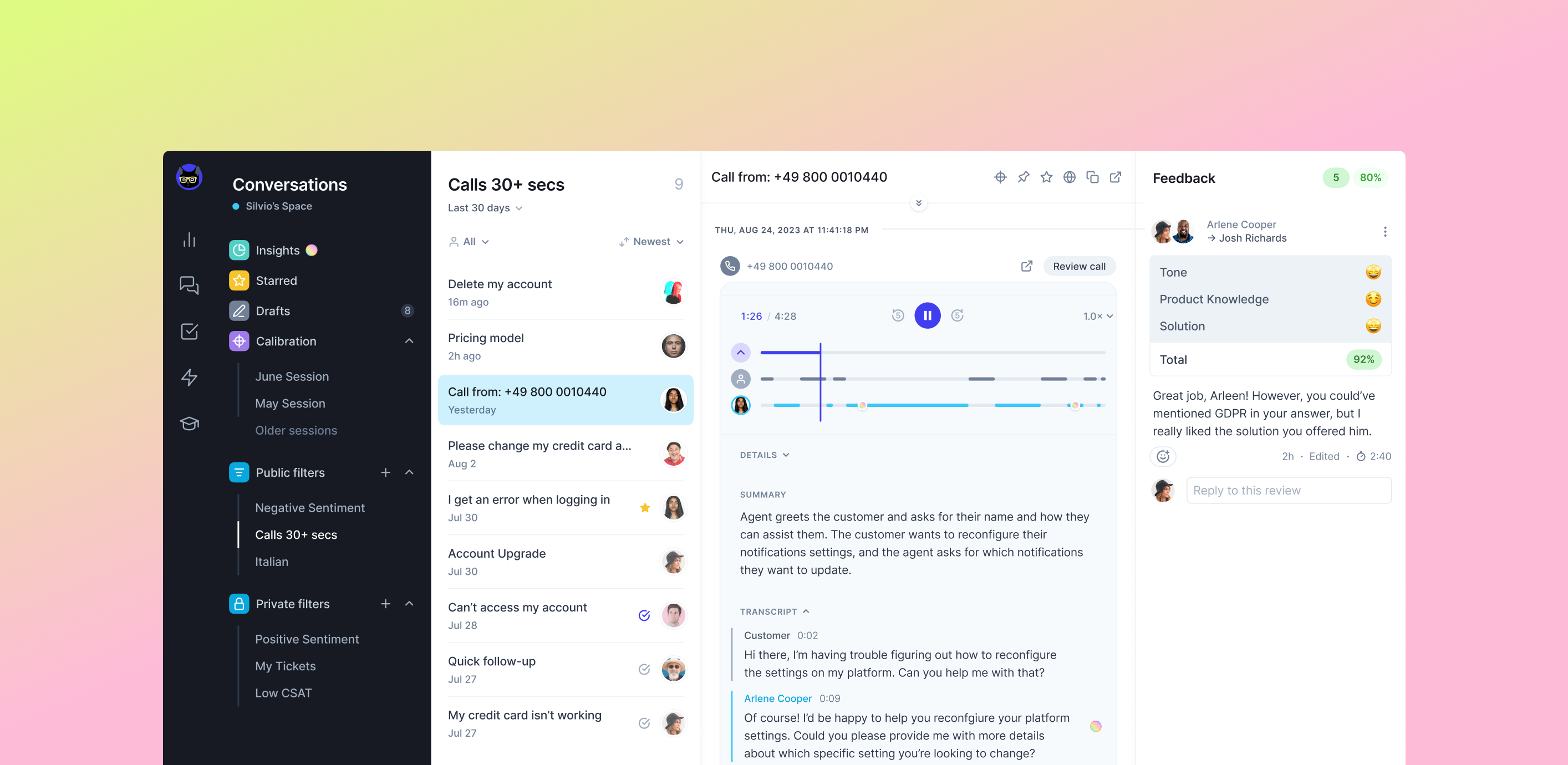Imagine this. You’ve just arrived at work, and you’re ready to start your day. You’ve got a lot on your plate, but you’re feeling good, and you’re looking forward to tackling everything that comes your way. Then, your phone rings. It’s a customer service call. It’s someone who is very angry, and they’re taking it out on you.
What do you do? How do you handle angry customers effectively?
The reality is that dealing with upset customers is a part of customer service. It’s one of the most important types of business communication, but it’s not always easy. However, one way that will surely help you defuse the situation is by using proper phone etiquette and purrr-fecting your customer service voice.
For this reason, we’re giving you the 411 on the ten customer service etiquette rules you should always follow to ensure a perfect support service experience for your caller.
Grab yourself a cup of coffee (or a lemon and ginger tea as your voice warm-up), and let’s get started!
What is customer service phone etiquette?
Customer service phone etiquette is the set of guidelines that dictate how to conduct yourself when communicating over the phone. This includes everything from answering calls to ending them.
For example, let’s say the person you’re on the phone with is struggling to set up your business software that aids with employee unproductivity. They’re feeling frustrated because they’re not tech-savvy, and this is preventing their team from being productive. As their customer service representative, it’s your job to be patient and help them through the process. This is where proper customer service phone etiquette comes into play.

Why is customer service phone etiquette important?
There are a number of reasons why phone etiquette is important, but today we’re going to look at the top five reasons why it’s essential for customer service.
1. It sets the tone of the conversation
The way you answer the phone will set the tone for the entire conversation. Your tone of voice is one of the most important aspects of great customer service. If you sound rushed, annoyed, or disinterested, it’ll put your caller on edge, and they’ll be less likely to want to work with you. On the other hand, if you sound friendly and helpful, you’ll put them at ease and make them more likely to want to work with you.
2. It shows that you’re professional
Using proper phone etiquette shows that you’re a professional who takes your job seriously. In the same way, a well-designed, easy-to-navigate website helps with online reputation management, and professional phone manners will do the same for your offline reputation.

3. It builds trust
When you use proper customer service phone etiquette, you build trust with your caller. They’ll know that they can rely on you to be respectful, patient, and helpful. This is important because it’ll make them more likely to do business with you in the future.
4. It makes you more likable
Nobody wants to deal with someone who is rude, impatient, or unprofessional. When you use proper phone etiquette, you come across as likable and easy to work with. This is important because it’ll make your caller more likely to want to do business with you.
5. It shows that you care
When you use proper phone etiquette for customer service, it shows that you care about your caller and their experience. This is important because it’ll make them more likely to do business with you in the future.
Still need some convincing on the importance of good customer service? Below you’ll find some recent stats to highlight just how crucial it is for your business.
- If the company’s customer service is excellent, 78% of consumers will do business with a company again after a mistake. (Salesforce Research)
- A good customer service experience heavily impacts recommendations. Consumers who rate a company’s service as “good” are 38% more likely to recommend that company. (Qualtrics XM Institute)
- 93% of customers are likely to make repeat purchases with companies that offer excellent customer service. (HubSpot Research)

The cost of bad customer service
Now that we’ve looked at the importance of good customer service, let’s take a look at the cost of bad customer service.
According to Zendesk, roughly 50% of customers say they would switch to a new brand after one bad experience. So not only does bad customer service cost you, customers, it also costs you money. In fact, poor customer service costs around $75 billion to $1.6 trillion per year in the US alone.
Some of the most common complaints that customers have include
- Rudeness: This could be anything from actively saying rude things to the customer to having an abrasive tone of voice.
- Unprofessionalism: Using slang, cussing, or having other conversations in the background of a customer service call would all fall into this category.
- Not listening: This is probably the most common complaint. Customers want to feel like they’re being heard, and if you’re not listening to them, they’ll take their business elsewhere.
Let’s put this into play. Imagine you’re on the phone with a SaaS customer service rep because you want to cancel your subscription. You’ve been a customer for two years, and you’re happy with the product, but you’re no longer in need of it. If the customer service rep is rude or unprofessional, they may say something like, “Well, too bad. We don’t offer refunds, so you’re just out of luck.” This would obviously not be a good experience for the customer.
On the other hand, if the customer service rep is professional and helpful, they might say something like, “I’m sorry to hear that you’re canceling your subscription. Is there anything we can do to change your mind? If not, I’ll go ahead and process the cancellation for you.”
Even though the customer is still canceling their subscription, they had a much better experience because they felt like they were being heard and their concerns were being addressed.
This is why having good customer service is so important. It not only keeps customers happy, but it also helps to prevent them from leaving in the first place. So, without further ado, let’s learn the ten steps to brilliant phone etiquette.

Top 10 customer service etiquette rules
- Make sure you’re easily reachable
- Answer the phone within three rings
- Use a professional greeting
- Speak clearly
- Avoid jargon
- Actively listen & take notes
- Use positive language
- Avoid negative words & phrases
- Be enthusiastic
- Be honest if you don’t know the answer
Now that we’ve looked at the top five reasons phone etiquette is important, let’s look into the ten customer service etiquette rules you should always follow.
1. Make sure you’re easily reachable
Before we even get into how to act on the phone, it’s important that you and your company consider how easy it is to contact you at all. Let’s say you’re an international company, and you have customers in different time zones. It’s crucial to make sure that you’re easily reachable by your customers, no matter what time it is where they are.
The best way to do this is to have a 24/7 customer support line that they can call no matter what time it is. Also, ensuring that your customers are provided with a local number they can reach you on will also show that you’re committed to providing them with the best possible service.
2. Answer the phone within three rings
Imagine this. You run an instant messaging business, but all of a sudden, your servers go down. You need to contact customer support ASAP! If you don’t, you risk losing customers. But when you call customer support, nobody answers the phone. You wait and wait, but still no answer. After a few minutes, you finally give up and hang up. How frustrated would you be?
This is why it’s important to answer the phone within three rings. If you don’t, you risk frustrating your caller and making them less likely to want to do business with you.
3. Use a professional greeting
When you answer the phone, make sure to use a professional greeting. This could be something as simple as, “Hello, this is John from XYZ Company. How can I help you?”, or “Thank you for calling XYZ Company. This is John, how may I help you?”.
It’s important that you use a professional greeting because it shows that you’re taking the call seriously and that you care about your caller.

4. Speak clearly
When you’re on the phone, it’s important to speak clearly. This means enunciating your words and speaking at a pace that is easy for the other person to understand. If you mumble your words or speak too quickly, it’ll be difficult for the other person to understand you and this will only frustrate them.
Let’s say your customer wants to know about the best VoIP phone service for small business owners. If you’re rushing through your explanation or mumbling your words, they’re not going to get the information they need, and they’ll likely go to a competitor who can explain things more clearly.
5. Avoid jargon
When you’re speaking to a customer, it’s important to avoid using jargon. Jargon is defined as “specialized or technical language used by a group of people with a common interest.”
For example, if you’re setting up a website for a customer, they may call to ask for advice on the best domain for their business. Instead of just throwing out jargon terms like “IO” or “TLD,” take the time to explain what these mean in layman’s terms. So, you’d introduce the type of domain (let’s use IO as an example), and you’d then explain what is IO and how it differs from other domains.
Alternatively, your customer might call you up with a tech question such as ‘How can I optimize Notifications for macOS?’ If you work in tech support, it can be easy to forget that not everyone is as familiar with the jargon as you are. In this case, you’ll want to explain this simply and clearly.
6. Actively listen & take notes
When you’re on the phone with a customer, it’s important to actively listen to what they’re saying. This means giving them your full attention and not letting your mind wander. It’s also important to take notes while they’re speaking so that you can reference them later.
For example, let’s say a potential customer calls to ask you about how to become an affiliate marketer through your company. You want to make sure that you listen to their questions carefully and take note of any concerns they have. This way, you can address them later on in the conversation.
7. Use positive language
When you’re speaking to a customer, it’s important to use positive language. This means using phrases that are affirmative, such as “I can help you with that” or “that sounds like a great idea.”
Using positive language shows the customer that you’re willing to help them and that you’re interested in what they have to say. It also helps to build rapport and creates a more positive relationship between you and the customer.

8. Avoid negative words & phrases
In addition to using positive language, it’s also important to avoid using negative words and phrases. These have negative connotations, such as “no,” “but,” or “can’t.”
Using negative words and phrases will only make the conversation more negative, and it’ll be more difficult for the customer to trust you.
9. Be enthusiastic
When you’re speaking to a customer, it’s important to be enthusiastic. This means showing interest in what they’re saying and being excited about the products or services you’re offering.
For example, let’s say a customer calls to ask about your new product. Instead of just giving them a list of features, you want to tell them why you’re excited about the product and how it can benefit them.
10. Be honest if you don’t know the answer
Let’s face it. We’re not all experts on every single topic. And that’s okay. If a customer asks you a question that you don’t know the answer to, it’s important, to be honest with them.
For example, let’s say a customer calls and asks about the benefits of conducting a crowd test on their product idea. If you’re not familiar with crowd testing, it’s okay to tell the customer that you’re not an expert in that area and offer to find someone who is.
Final thoughts on customer service etiquette rules
So there you have it — 10 telephone etiquette tips to help you provide the best possible customer service. By following these rules, you’ll be sure to build positive customer relationships and create a great first impression. Remember, your voice is the key to success!
Did you know that 42% of teams use quality assurance to manage call center performance? Recording, transcribing, and assessing phone calls (and other customer interactions) is a great way to see proper customer service phone etiquette in action — in an outsourced or “internal” customer service team.
Originally published in July 2022; last updated in October 2023.



